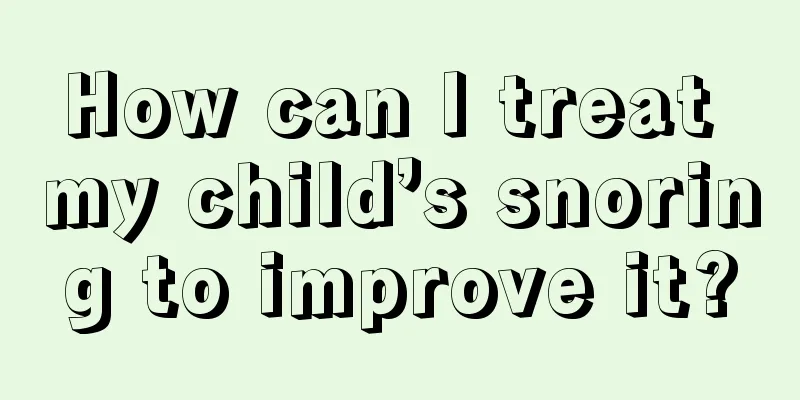What should I do if my child is born with amblyopia?

|
The rapid development of modern science and technology has produced many electronic products. Although these products have a certain promoting effect on human civilization, they also cause certain harm to our bodies. So now more and more children learn to use electronic products, which causes their eyes to become myopic prematurely. However, some children have amblyopia due to gene mutation or genetic inheritance. Let’s take a look at it together. Amblyopia is an eye disease with a high incidence rate (3-5% in my country) that seriously damages children's vision. Its harmfulness is far greater than myopia. Because for myopia, a pair of glasses can improve a child's vision and make it no different from that of a normal child. The vision of amblyopic children cannot be improved by glasses, and their ability of both eyes to work together is zero, which often leads to stereoscopic blindness. The appearance of the eyes of children with amblyopia is generally no different from that of normal children. More than half of the children are not diagnosed with amblyopia until they are 5-6 years old, at which time the best treatment period for amblyopia has been missed, which will cause lifelong regrets for both the children and their parents. So how can we detect whether a child has amblyopia earlier? Below I will teach parents three simple methods to detect whether their baby has amblyopia before the age of 2-3 years old. 1. Observe carefully Amblyopia is actually an eye disease that is not easily visible on the surface. Children do not feel any pain or discomfort. But if parents are careful enough, they can find some clues. If your child exhibits the following behaviors, it may mean that amblyopia has become a constant companion. He often rubs his eyes and likes to look to one side with his head tilted; he often squints or closes one eye to see things even in not very strong sunlight; he cannot pay attention to or recognize people or objects at a close distance; he puts toys close to his face and watches TV very close; his eyes are squinting and his eyes cannot move in a coordinated manner; his eyes keep moving left and right or up and down, and even his head shakes slightly; one eyelid is larger than the other, and he always likes to tilt his head back. 2. Simple Covering When the child is one year old, the vision of both eyes can reach about 0.2. At this time, temporarily cover one eye with a clean cloth. If the vision of that eye is good, the child can still play without any special reaction. The next day, cover the second eye with a cloth in the same way. If the child remains quiet, it means that the vision of the two eyes is roughly the same. On the contrary, if the child becomes restless and tries to tear off the cloth strips after covering his eyes alternately, it means that the vision of his two eyes is very inconsistent, one eye has strong vision and the other eye has weak vision, and the child does not want his parents to cover the eye with strong vision. At this time, you can clearly understand which eye of the child has a problem. 3. Get a physical examination as soon as possible Many children will have a vision examination when they enter primary school, and amblyopia is often discovered at this age. Here, it is recommended that parents conduct vision examinations at the age of 1. Nowadays, specialized hospitals can check children's vision as early as 10 months old. Just use the instrument like a camera to find out whether the child has amblyopia, and the accuracy rate is over 90%. This is the best choice for parents who are worried about not being careful enough and don't want to go through the trouble of covering up. Therefore, don’t forget to check your child’s eyesight during his or her one-year-old physical examination. The key to treating amblyopia is early detection and early treatment. Therefore, parents can use the above three methods to check whether their children have amblyopia. If any problems are found, they should go to the hospital for formal treatment as soon as possible and persevere. It is not terrible for children to have amblyopia prematurely, but if our parents do not pay attention to this, the amblyopia problem of our children will become more serious. Amblyopia does not necessarily occur at the beginning, but may appear suddenly during the child's growth. This is called a mutation. Some are caused by genetic problems of the parents, so they cannot be avoided. |
<<: Why do children lose their appetite?
>>: At what age is it best for children to change their teeth?
Recommend
Children's fright symptoms
Newborn babies are most likely to be frightened w...
Is it okay for children to take a bath every day?
Nowadays, mothers who love cleanliness always was...
What causes cramps in children? These 6 reasons are the most common
When a child has symptoms of convulsions, parents...
What are the precautions for children to use nebulizer?
Nebulizer therapy refers to a treatment method th...
What are the treatments for ADHD in children?
Nowadays, most families have a child who loves to...
What medicine should children take for mumps
Since children's immunity is much lower than ...
What are the folk remedies for treating sinusitis in children?
Children are the key protected objects in the fam...
Methods to enhance children's immunity
In fact, people's lives are quite busy nowada...
How to treat fetal toxicity in babies
Fetal toxins is a folk term, which mainly refers ...
Parents must pay attention to the dangers of anemia in children!
The harm of anemia in children is very serious. A...
How to make a three-month-old baby lift his head?
Many parents don’t know much about the issue of b...
How to treat hemangioma on baby's head
Hemangioma refers to a benign tumor that occurs i...
What are the top 10 reasons why babies cry at night?
Crying is the main way for babies to communicate,...
What should I do about my child’s bone development?
During the stage of bone development, children sh...
What should you pay attention to before letting your baby swim?
Many parents like to take their babies swimming. ...









